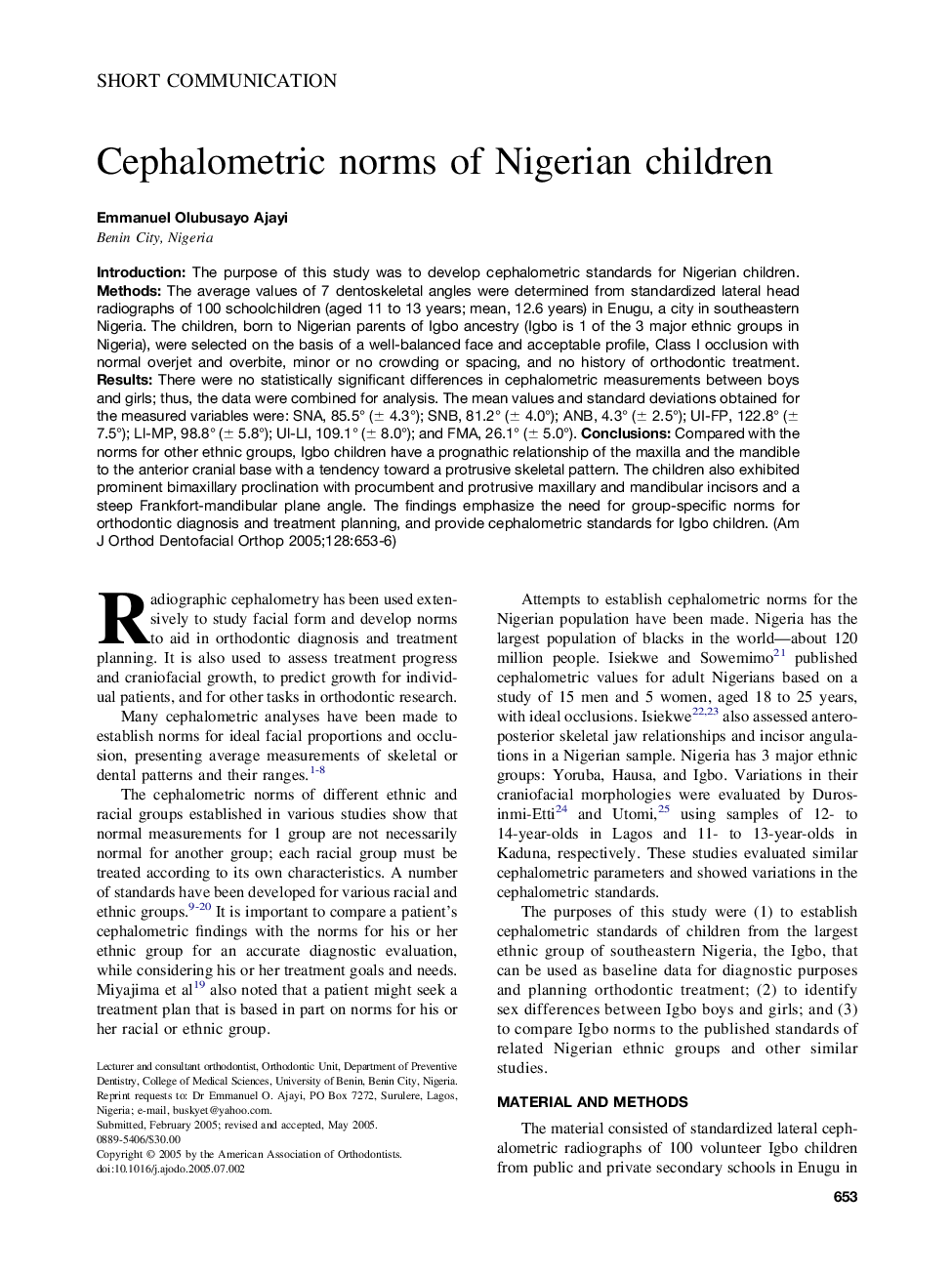| Article ID | Journal | Published Year | Pages | File Type |
|---|---|---|---|---|
| 9992551 | American Journal of Orthodontics and Dentofacial Orthopedics | 2005 | 4 Pages |
Abstract
Introduction: The purpose of this study was to develop cephalometric standards for Nigerian children. Methods: The average values of 7 dentoskeletal angles were determined from standardized lateral head radiographs of 100 schoolchildren (aged 11 to 13 years; mean, 12.6 years) in Enugu, a city in southeastern Nigeria. The children, born to Nigerian parents of Igbo ancestry (Igbo is 1 of the 3 major ethnic groups in Nigeria), were selected on the basis of a well-balanced face and acceptable profile, Class I occlusion with normal overjet and overbite, minor or no crowding or spacing, and no history of orthodontic treatment. Results: There were no statistically significant differences in cephalometric measurements between boys and girls; thus, the data were combined for analysis. The mean values and standard deviations obtained for the measured variables were: SNA, 85.5° (± 4.3°); SNB, 81.2° (± 4.0°); ANB, 4.3° (± 2.5°); UI-FP, 122.8° (± 7.5°); Ll-MP, 98.8° (± 5.8°); Ul-LI, 109.1° (± 8.0°); and FMA, 26.1° (± 5.0°). Conclusions: Compared with the norms for other ethnic groups, Igbo children have a prognathic relationship of the maxilla and the mandible to the anterior cranial base with a tendency toward a protrusive skeletal pattern. The children also exhibited prominent bimaxillary proclination with procumbent and protrusive maxillary and mandibular incisors and a steep Frankfort-mandibular plane angle. The findings emphasize the need for group-specific norms for orthodontic diagnosis and treatment planning, and provide cephalometric standards for Igbo children.
Related Topics
Health Sciences
Medicine and Dentistry
Dentistry, Oral Surgery and Medicine
Authors
Emmanuel Olubusayo Ajayi,
